Shinkansen to Maglev: How Bullet Trains Are Breaking the Speed BarrierShinkansen to Maglev: How Bullet Trains Are Breaking the Speed Barrier
In the world of interesting things
Is more better?
In the first third of the 19th century, when steam locomotives had just appeared, they were light machines with low power. Thus, the obvious idea was born that they need to be duplicated to increase power. As far as we know, the first such simple solution of a double steam locomotive was built in 1831 “South Carolina”. The solution was still quite primitive: in essence, two simple locomotives of the same type were connected. Moreover, they were even simplified to some extent: they both used one cylinder instead of two, apparently believing that in this way each of them would help the other pass through the dead center. This idea, of course, did not justify itself.
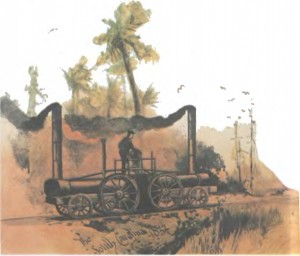
Later, however, the entire plant began to produce absolutely symmetrical steam locomotives; these were the famous Fairleigh steam locomotives. The figure given here is taken from the catalog of this company.
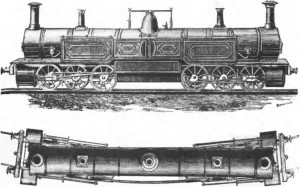
If we do not consider that the side view and the top view do not coincide even by chance (for example, we will look for water tanks and a safety valve in vain on the top view), then there is only one problem: where and how do they burn fuel in this locomotive?! Although the place where the driver can sit and where the necessary equipment is located is not so secondary.
England is undoubtedly the birthplace of the railway. Initially, for the construction of the railway, short cast rails were used, which were connected in rail linings installed on sleepers. Since the twenties of the last century, first forged, and then rolling rails began to be made. In 1835, symmetrical rolling rails with two heads were used for the first time during the construction of the London-Birmingham road.
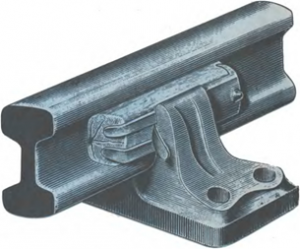
They were used by Robert Stephenson, the son, employee and successor of George Stephenson, the “father of the railroad.” His idea was that when the upper head of the rails wears out, they can be turned over, thus doubling their life. However, this idea did not justify itself. The thing is that in the rail linings, the lower head of the rails was so worn that it became completely unusable.
Despite this, many English and other European railways – primarily in France – were forced to keep this system, however, using rails with an asymmetric profile, about which there is no question of overturning.
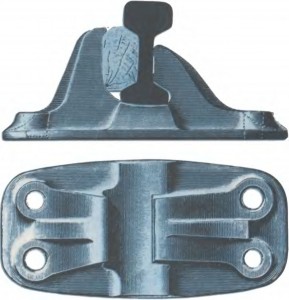
This includes the patent of the Lisbon inventor Moses Zagura (NDP 4642; 1878). Here is an excerpt from his description:
“The object of the present invention is to make it possible for railway rails, when their upper side wears away, to be turned over and the lower side used.”
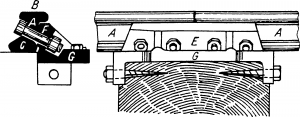
A small explanation for the picture. The profile of the rail is symmetrical in the sense that its axis is inclined at an angle of 63° both to the surface B, and to the base C, that is, it can be rotated 180°. The rib F of the cast rail support, protruding upwards, precisely contacts the neck of the rail A and thus serves as a support. For further distribution of the load, the lower surface of the C rail rests precisely on the sleepers. The idea is certainly interesting, but it is not surprising that it was not implemented anywhere.
The failures of the previous experiments did not at all bother the German inventor Matthias Demmer, who on June 22, 1878, under the number NDP 3536, first patented steel railway tracks that used rails with three heads.
Here is a brief description: “A significant novelty in this invention is the use of triple rails, that is, rails with three heads, one of which is the path, and the other two serve as supports. The attached picture shows what is called a metric triple rail…
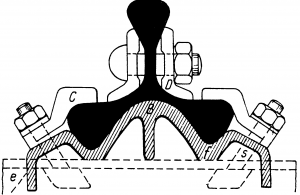
The advantage of this system is that the triple slats can be stacked three times, they are extremely securely connected to the substrate shown in the picture and weigh significantly less compared to three slats with a wide base.
On November 18, 1879, under the number of NHP 9564, Demmer patented a modification of his invention.
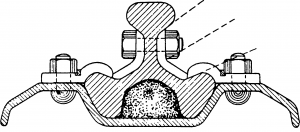
We are not giving these dates by chance. In the new solution, the rail lining was much simpler and lighter, and the problem of water drainage was also solved. This inventor commands special respect. Nowhere, never, in any special work have we met with his solution, except in these two descriptions of patents. It is obvious that this system was not introduced anywhere, at least because of the difficulties with the production and rental of such rails.
Petryk O. Curiosities of technology. View of Acad. of Hungarian Sciences. – Budapest, 1985. 150 p.

